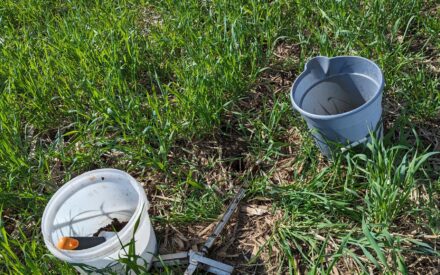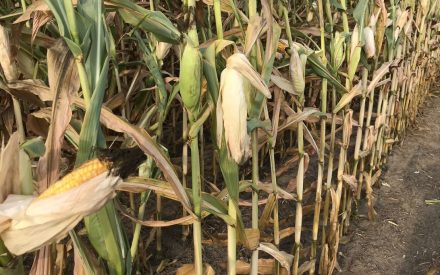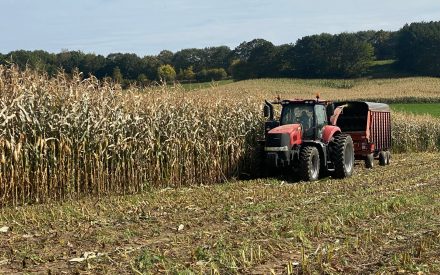Whether you are using forage grasses or legumes for just a few years in rotation with productive fields of cultivated crops, or keeping erodible land in permanent grass/legume pasture, choosing a pasture species or mix is a long-term investment that merits careful consideration of different management and adaptation aspects. These main factors include soil conditions, seasonal distribution, maturity types, legume percentage of the mix, grazing tolerance, and winterhardiness. As you are making your selection you may want to check and review these factors with your seed supplier.
Soil conditions
When selecting a pasture species it is important to consider the soil pH and soil drainage where the seeding will take place. The species to be seeded need to be adapted to the particular soil conditions if we want the seeding to be successful and the stand to persist over time. Soil pH is critical and determines what legumes can be seeded, with most legumes requiring a soil pH above 6.5. There are some legumes that are adapted to slightly acidic conditions, reason why is important to review the factsheets from the seed marketers.
Seasonal distribution of yield
The availability of forage production will vary with species. Perennial grass/legume mixes will provide a more uniform distribution of yield of high quality throughout the season compared to grass-only pastures. Plus, the legume will fix nitrogen and be a source of nitrogen to the grass in the mix.
In Wisconsin, cool-season grasses like, Kentucky bluegrass, bromegrass, reed canarygrass, meadow fescue, orchardgrass and others, will make 65 to 70% of the yield before July 1. If you have a pasture grass mix with perennial legumes like birdsfoot trefoil or alfalfa, they will make 50% of their yield after July 1; (see chart on season distribution). In contrast, warm-season annuals like sudangrass will produce nearly all of their production during July and August. Depending on your needs you can have a pasture mix for a grazing rotation module, and reserve other areas to be planted with summer annuals later on if needed.

Maturity
Maturity or heading date of cool-season grasses needs to be considered when choosing varieties, especially if the options differ relative to their maturity. There are early varieties and late maturing ones. The initial heading date of early varieties can be two weeks earlier than late maturing types. Once you know the species you will be using, whether bromegrass, orchardgrass, or any other cool-season grass, the selection of the variety comes next; choose for the adequate maturity. Maturity is the factor that affects forage quality the most. As the plant matures there is more accumulation of fiber and lignin, decreasing digestibility of the forage. In Wisconsin, late maturing varieties are recommended for most forage grasses since this will provide a longer vegetative stage extending the nutritive value of the grasses. Once you know the species or mix you are using, go for a late maturing variety.
Legume Percentage in Mixture
The amount or percentage of legumes in the mix will affect the quality of the mixture. Because of the nitrogen fixation capacity of legumes, they have high nitrogen concentration in the tissues, and have more rapidly digested leaves. Depending on the use of the pastures and the nutritional needs of the grazing herd, the presence and amount of legume can be varied in the forage mix to be selected. The seed industry provides an assortment of grass only mixes, or grass/legume mixes that can accommodate the particular needs of an operation. Adapted legumes for the upper Midwest include red clover with good cold tolerance, Alsike clover also with good cold tolerance but with more tolerance to poor drained soils than red clover, large white clover (ladino) also with tolerance to poorly drained soils and with fast establishment, and birdsfoot trefoil that unlike most clovers and alfalfa is a non-bloating legume, slow to establish but well suited for permanent pastures due to tolerance of close grazing for some varieties.
Grazing tolerance
The tolerance to frequent grazing is another factor to consider when selecting species or mixes. Species that are very tolerant to grazing include Kentucky bluegrass and Perennial ryegrass. Both of these species have growing points that are held underground which allows for close grazing tolerance. Following in tolerance are tall fescue and orchardgrass, which are bunchgrasses and due to storage of reserves in the stem bases, they cannot be grazed as close. A pasture mix with species that are similar in grazing tolerance provides a balanced blend.
Winterhardiness
Even though you are deciding for a spring planting, your pasture will be established and hopefully growing for many years to come including winters. Perennial pastures that are adapted and well managed can be there for a long time. It is important in the northern areas to choose species and varieties that are winter hardy. Grasses with good winter hardiness include bromegrass, timothy, reed canarygrass, and Kentucky bluegrass; forage grasses with moderate winterhardiness include orchardgrass and tall fescue; and presenting poor winterhardiness is perennial ryegrass. In terms of legumes, Kura clover is very winter hardy, and so is red clover. If planning on adding alfalfa choose varieties that are winter hardy and more of the branching types since the use will be for pasture and not for hay production.
Pest resistance
Look at the disease and pest resistance of the varieties in consideration. Choose species or mixes with improved disease resistance or pest resistance package if available.
Lastly, your choice of pasture species or pasture mix should offer robust well-matched varieties adapted to your needs and management style.

 ▶ AI in Agriculture
▶ AI in Agriculture ▶ Evaluating MRTN Rates for Corn Grain and Silage After Manure Application
▶ Evaluating MRTN Rates for Corn Grain and Silage After Manure Application ▶ Practices to Optimize the Nutritive Value of Corn Silage
▶ Practices to Optimize the Nutritive Value of Corn Silage ▶ Explore the New Corn Silage Dry Down Monitoring Tool
▶ Explore the New Corn Silage Dry Down Monitoring Tool


